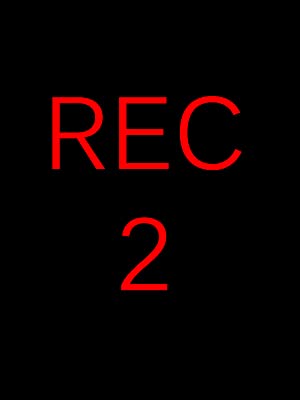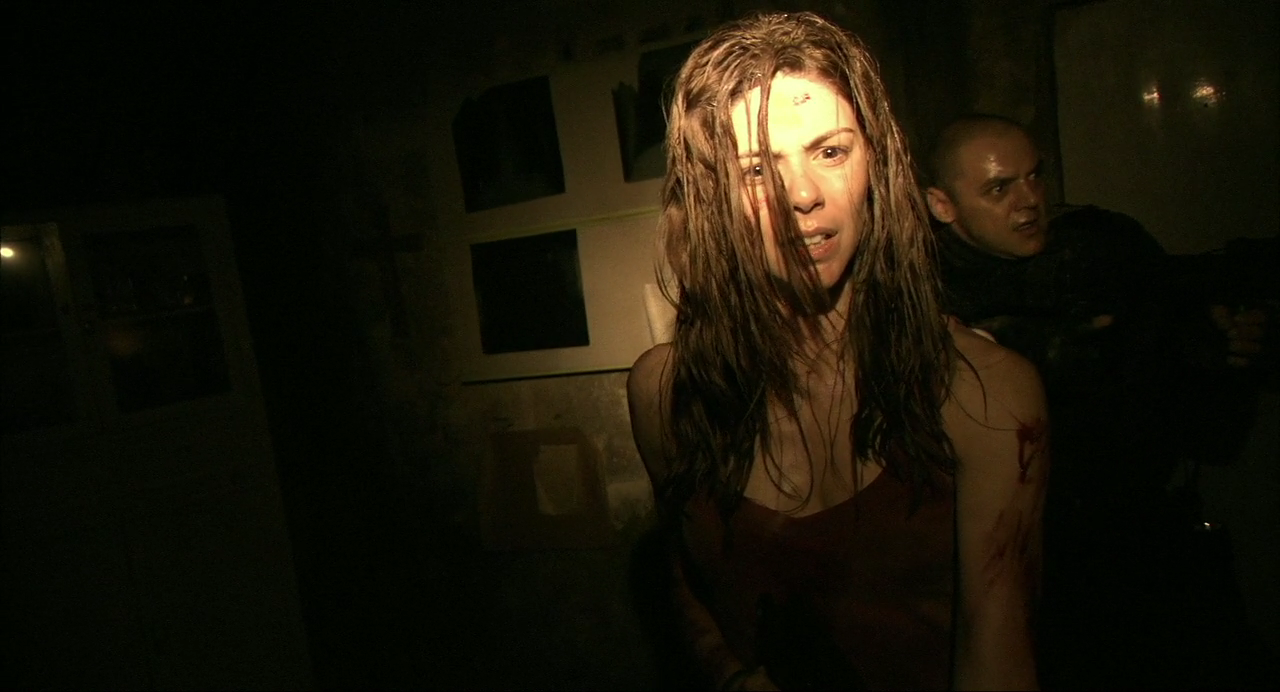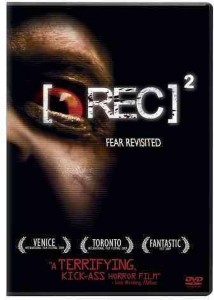

It’s a poor decision, for two reasons - it interrupts the flow of the film and kills the momentum, immediately taking the viewer out of the experience, jarringly disrupting the “found footage” idea. Instead of happening organically, there’s simply a break in the action, and all of a sudden we’re rolled back to seeing things from the kids’ perspective, since - natch - one of them has a camera as well. The introduction of a second group of people - an itinerant group of kids who sneak into the building (despite it being sealed off by a squadron of government badasses with shoot-to-kill orders) is wholly unnecessary and clumsily introduced. Unfortunately, the film falters in some of its other efforts to keep things rolling, and some of the new elements simply don’t work. It’s a little discordant given the rapid movements of the camera holder, but overall it still works. It’s strangely beautiful in its depiction of grimy ruin - a twisted pastiche of ruined homes and bloody splatters that somehow, when filmed through the stuttering eye of the handheld, proves to be haunting and somewhat riveting. The claustrophobic intensity of the first film is still there - just like in the original, the building itself plays a critical role in the film’s effectiveness. Every new room shows signs of the destruction wrought earlier, and every corner brings that same sense of dread. Darkly lit corridors are made all the more unnerving because now they’re slick with blood and gore. In essence, the mood of the film hasn’t changed (though it’s not nearly as frightening), and it still has the same creepy atmospherics as its predecessor, but made even more macabre as a result of the preceding events. It would be like if The Two Towers showed that The Fellowship of the Ring actually took place on a holodeck.īut once the supernatural story is established, the film sails comfortably towards its new horizon. However, it creates an odd disconnect with the viewer, as if what you’d learned in the first film was wasted time and effort. Switching the direction of the story so radically after already having an entire first film’s worth of history is a blessing and a curse (so to speak) - it works, because it truly was a bit of a surprise. The preternatural element yields and interesting range of possibilities for the story, one that ultimately benefits the film, even if it felt a bit cheap at first. It’s not a bad idea, actually, and a way to keep the plot fresh and keep the viewer engaged. In an effort to maintain some originality, the writers injected a new, supernatural theme into the overarching storyline.


It turns out, that phrase is more apt than we suspected. Meanwhile, the doctor is searching for a blood sample from the originator of the virus - the whole thing was started by some shady research in this building, and if it gets out, all hell will break loose. As with the first one, the situation devolves rapidly, and the group is soon overrun with atavistic, cannibalistic freaks who seek to tear them apart. It seems like a simple enough assignment, except of course for the fact that a) the building is still sealed from the outside and b) the doctor is not who he says he is. A handful of SWAT members are being sent in to escort a doctor (Jonathan Mellor) into the building to assess the situation. 2 picks up immediately after the end of the first film, but with a new cast. Beware, it’s tough to review without some spoilers, but I’ll try to keep it as clean as I can. While they managed to continue the story and take it into an interesting and unexpected direction, it’s not without its stumbles as well. Because of that, I had a heightened anticipation of the film. 2, unlike many sequels to cult hits, managed to maintain the services of its original writers and directors, Balagueró and Plaza. It was remade into an Americanized, English language version, Quarantine, which was, despite being an almost shot-for-shot reproduction, fucking terrible. The story, about a team of firemen, a reporter, and a cameraman who end up sealed inside a building filled with people who slowly become infected with an unknown sickness that turns them into ravenous monsters, a la 28 Days Later, wasn’t exactly a ground breaker, but it was well-executed and deftly directed. Filmed with a hand-held camera in the Cloverfield / Blair Witch-style, first-person technique, it successfully made the viewer feel like they were really in the room, watching the events unfold. In 2007, Spanish film makers Jaume Balagueró and Paco Plaza collaborated on, one of the most engaging, interesting, and yes - fucking scary films of the last few years.


 0 kommentar(er)
0 kommentar(er)
